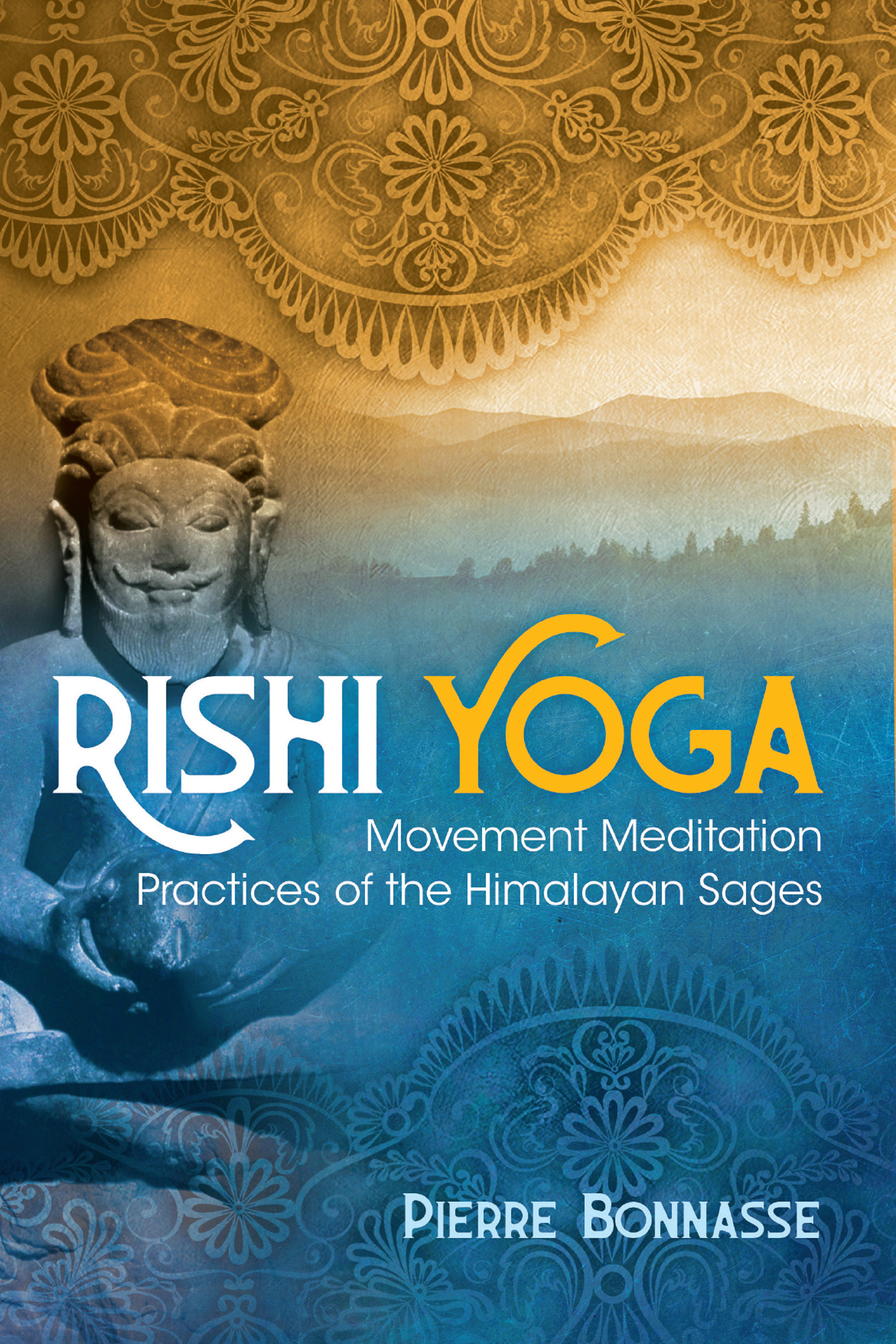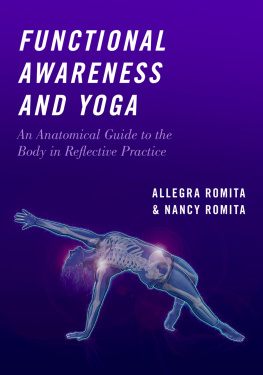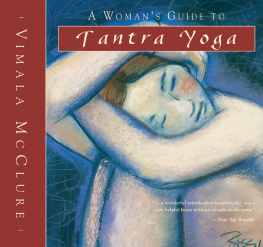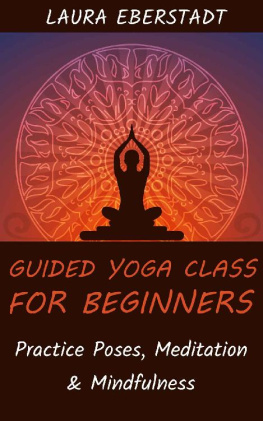

Introduction
The Rishi Yoga Meditation is a practice comprised of easy physical poses and movements, aided by an appropriate inner attitude, and logically combined with breathing exercises, sensory listening, and concentration, allowing for the very nature of meditation and contemplation to reveal itself in a simple and natural way, at the heart of ordinary movements and actions of daily life.
Based on simple principles that are applicable by everyone, this ancestral practice, transmitted by Himalayan yogis, draws its strength from its simplicity and a variety of exercises, as well as from its inventiveness, and numerous possibilities of adaptation to a wide field of application. This is how, after having spent some time in the Himalayas, Alfonso Caycedo created sophrologyand its twelve dynamic relaxation techniques in the sixties. Even though sophrology has its own jargon, approach, and methodology, in its essence it is clearly and considerably inspired by ancient yoga practices, and most probably by this little-known practice that summarizes everything by refocusing on its main aim.
In Indian philosophy, regardless of the points of view, this aim has always been the recognition of the Divine, whose nature is described as Being-Consciousness-Bliss. Being omnipresent, this nature is neither external nor internal, neither material nor spiritual, but it is present as the common essence of all phenomena and all beings. Multiple forms appear in the Oneness and dissolve in the Oneness itself.
In the same manner, if the essence of all phenomena is always Consciousness or Awareness, which this process invites us to probe so that it reveals itself, the practices attempting to access it are numerous, and can be adapted in an infinite number of ways. This is why the form and its adaptations proposed in this book, although transmitted in a traditional context, are just a suggestion among others, far from any kind of dogmatism or sectarianism; one can assimilate and adapt them according to one's understanding, needs, and objectives.
Here, conceiving and retaining a rigid method in an intellectual way for developing a new kind of therapy is not important. The main aim is to offer simple tools that promote the well-being of the body and the mind, and to especially allow one to open up to the essential dimension of one's being, beyond name and form, from which one can subsequently discern the numerous possibilities that can be freely explored.
The Dynamic Meditation described here constitutes a foundation for all variations or adaptations that can be done. Firstly, it allows one to stimulate, align, and recognize the fundamental structures of the being, through which the actions of the body and the mind take place. With progressive logic, the alert perception of these structures subsequently allows for the awakening to the unconscious dimension of the being, which ultimately reveals the Awareness itself, the unchanging witness of all phenomena, experiences, and states. But this essential realization does not necessarily involve any kind of progression or evolution: it can happen at any time, and through any bodily or mental action or movement. That being said, progressive logic allows for the recognition of the structures of the being, inextricably linked with the so-called states of Awareness, according to a process that goes from the most gross to the most subtle, and that can lead to the revelation of this light of Awareness that illuminates the process itself.
Thus, this basic approach will first allow for the awareness of the physical body and its tissues (skin, muscles, bones, and organs), focusing especially on the glands, joints, and spine, in order to warm up and deeply relax the central nervous system, through which the circulation of the vital life energy can be intimately felt. Indeed, the body is composed of meridians or energy channels, the most important of which are located in the spine. The crossing point of channels constitutes an energy center that stores and distributes the energy. The spine is therefore the abode of six important energy centers, which are all connected to other centers mainly located in the joints of the body where numerous channels cross over, and which ensure the distribution of the vital energy throughout the body. When blocks or knots form at these junctions, it obstructs the flow of energy, and can cause physical and mental disorders. In this way, through simple movements such as applying pressure, bending, stretching, and rotating, further reinforced by the alert synchronization of the breath, this basic Dynamic Meditation will allow for maintaining and restoring the correct flow of vital energy in the entire body, all the while favoring a better awareness of physical, energetic, and mental phenomena.
The attentive perceiving of these phenomena allows for the revelation of the very space of attention in which they arise. Gradually, the frontier between the conscious and the unconscious begins to give way, until the light illuminating all processes is fully revealed. And then comes the discovery of everlasting peace, pure Awareness, ever-present joy of being, and the revelation that all this has always been here, regardless of the place, the time, or the circumstances. This essential recognition of the Self, of the essence of being, allows us to instantly realize that our true nature is free of everything that appears and disappears in it. By intimately understanding that the witness of physical, respiratory, and mental movements does not move, that the witness of any kind of tension is without tension, and that the witness of suffering does not suffer, one can be free of what one believes oneself to be. Thus, a new dimension of existence opens up. Even if nothing changes in the external aspects of one's life, this life will nevertheless emerge in a silent space, overflowing with joy, always calm and peaceful, in which even the strongest and most concealed emotions will eventually manifest, and then fade away.
PART I
BASICS
Practicing Rishi Yoga Meditation
General Instructions for Rishi Yoga Meditation
Rishi Yoga Meditation lends itself to many variations, and can be adapted and adjusted in endless ways, depending on the needs of the moment. It is possible to do the full version composed of 108 exercises or shorten and adapt it to suit one's needs. One can practice as often as one likes and for as long as one likes. Many of the steps of the exercises lend themselves to being done either while standing up, in a sitting position on a chair or the floor, or lying down, according to one's requirements and abilities and according to the context. Anything is possible, as long as the exercises are performed logically, consistently, in a balanced and gentle manner, and with full awareness. In this way, the practice and its numerous possible alternatives allow for a detailed and deep exploration of the structures of the being, with varying degrees of progress.
Although on the surface this series of exercises seems to be a sequence of movements performed by the body, it does not in the least constitute a gymnastic exercise. Even if it is possible to accelerate the movements from time to time, they are generally performed slowly, and always with full awareness of the body and the breath, with consistent attention to sensations, emotions, thoughts, images, and all phenomena that appear and disappear in the peaceful, silent, and still space of Awareness, which the attentive perception of the moment and other phenomena reveals naturally. The attitude must be one of welcoming, listening, and openness, without effort or grasping, accepting everything that manifests with equanimity and attention.










